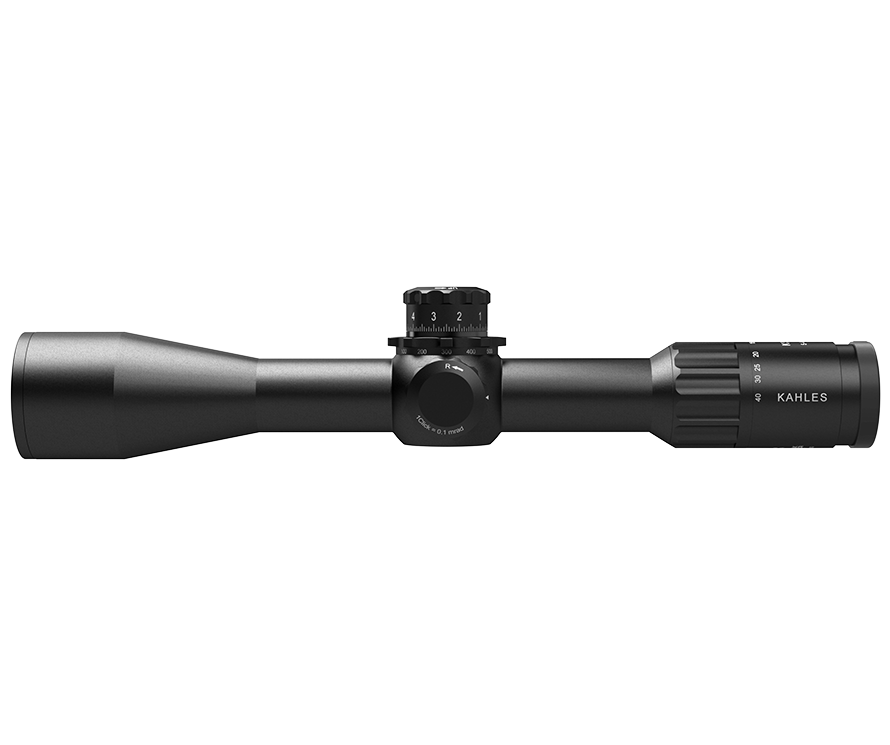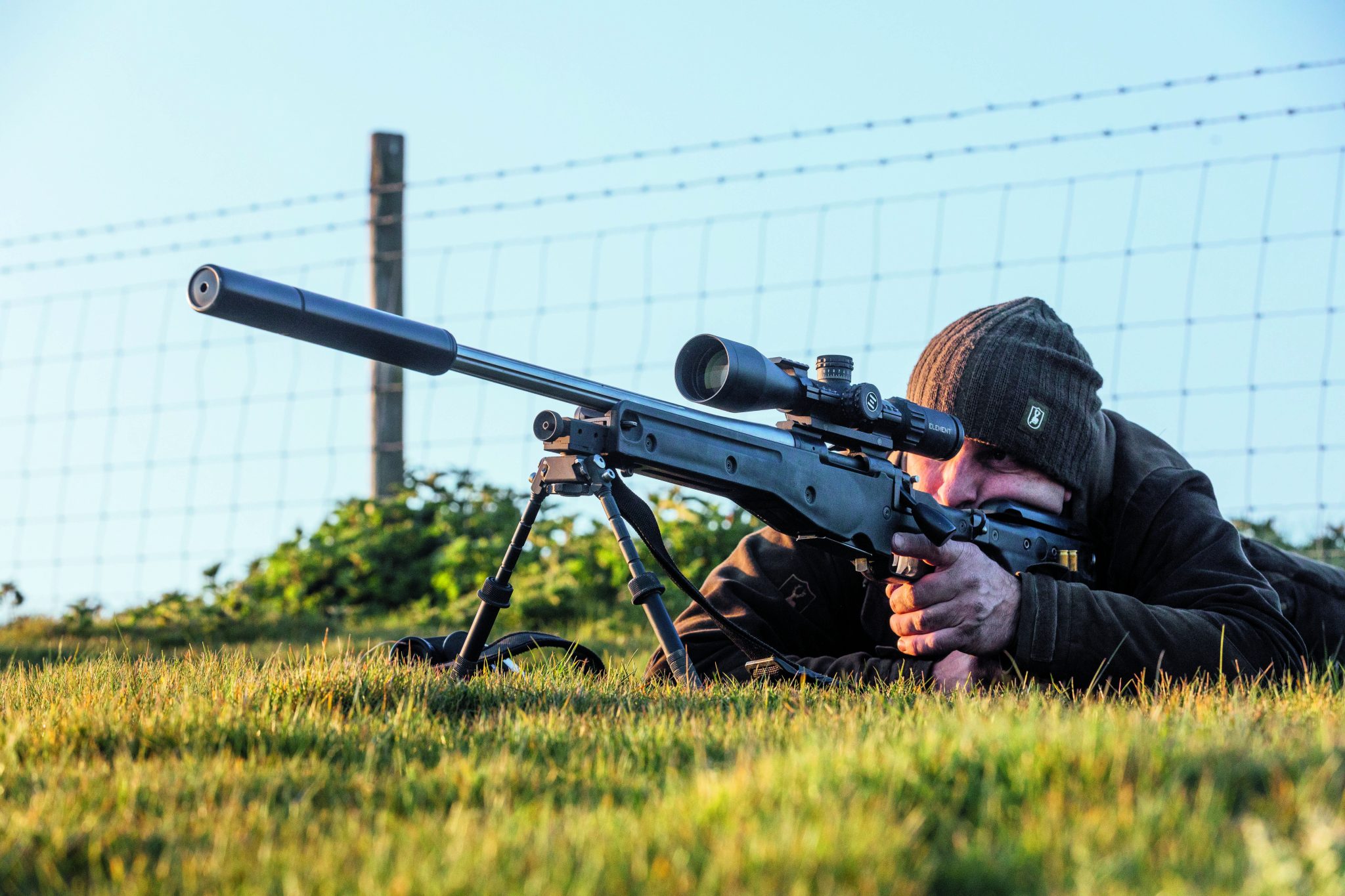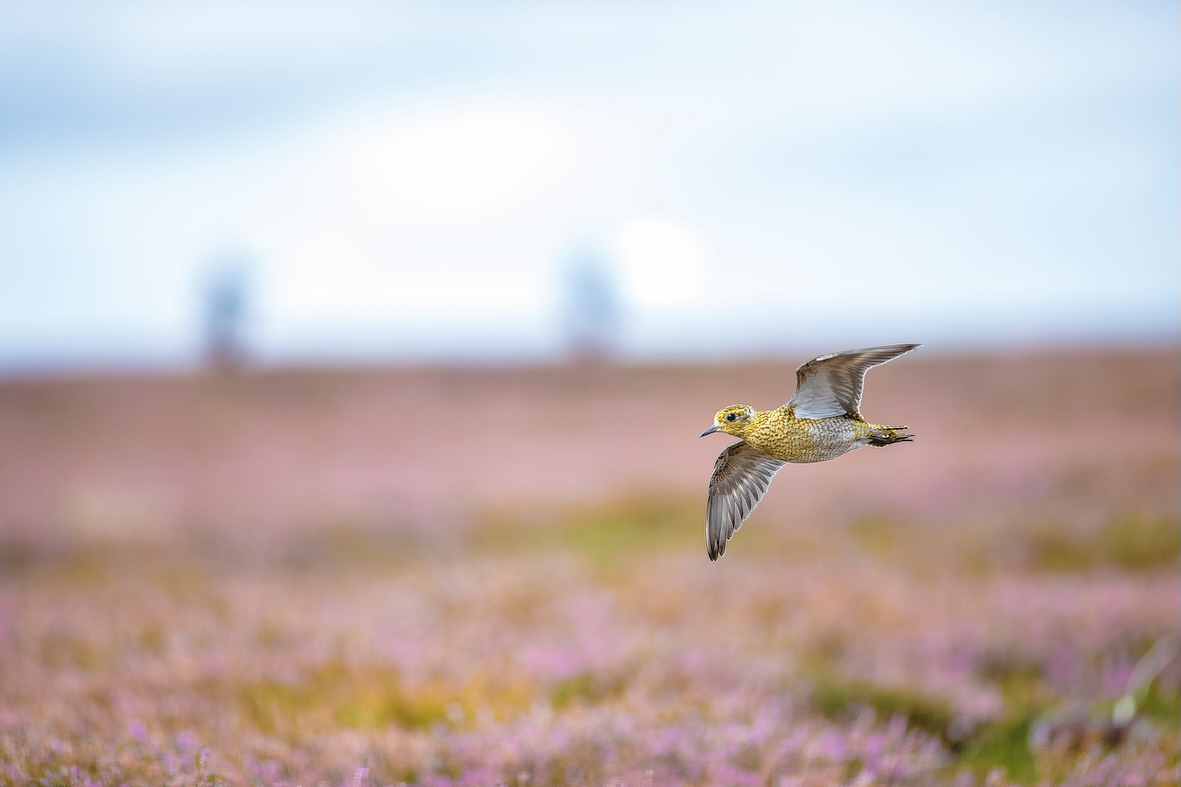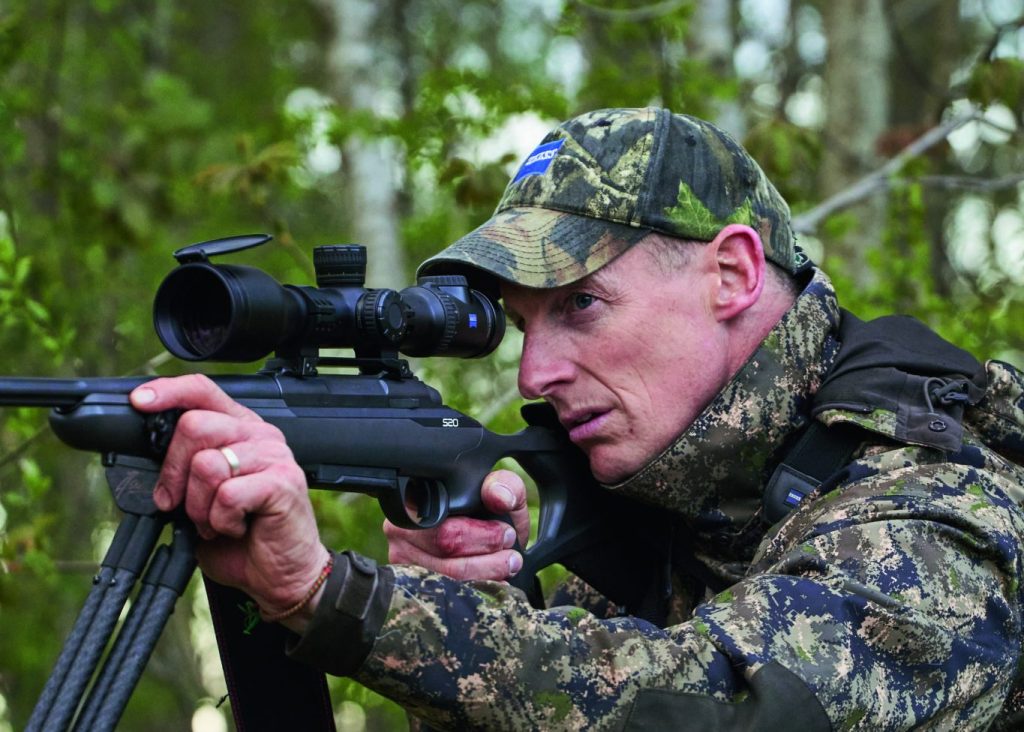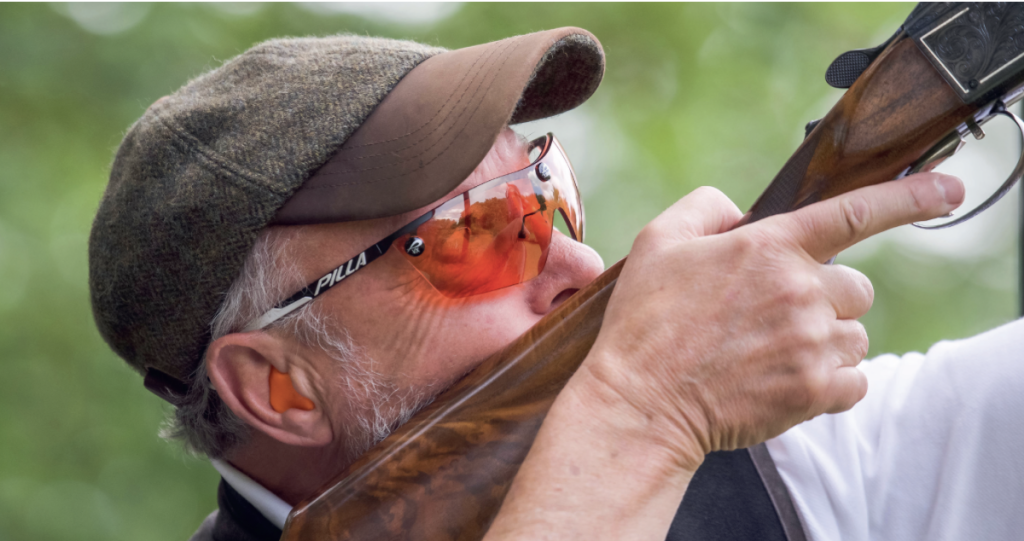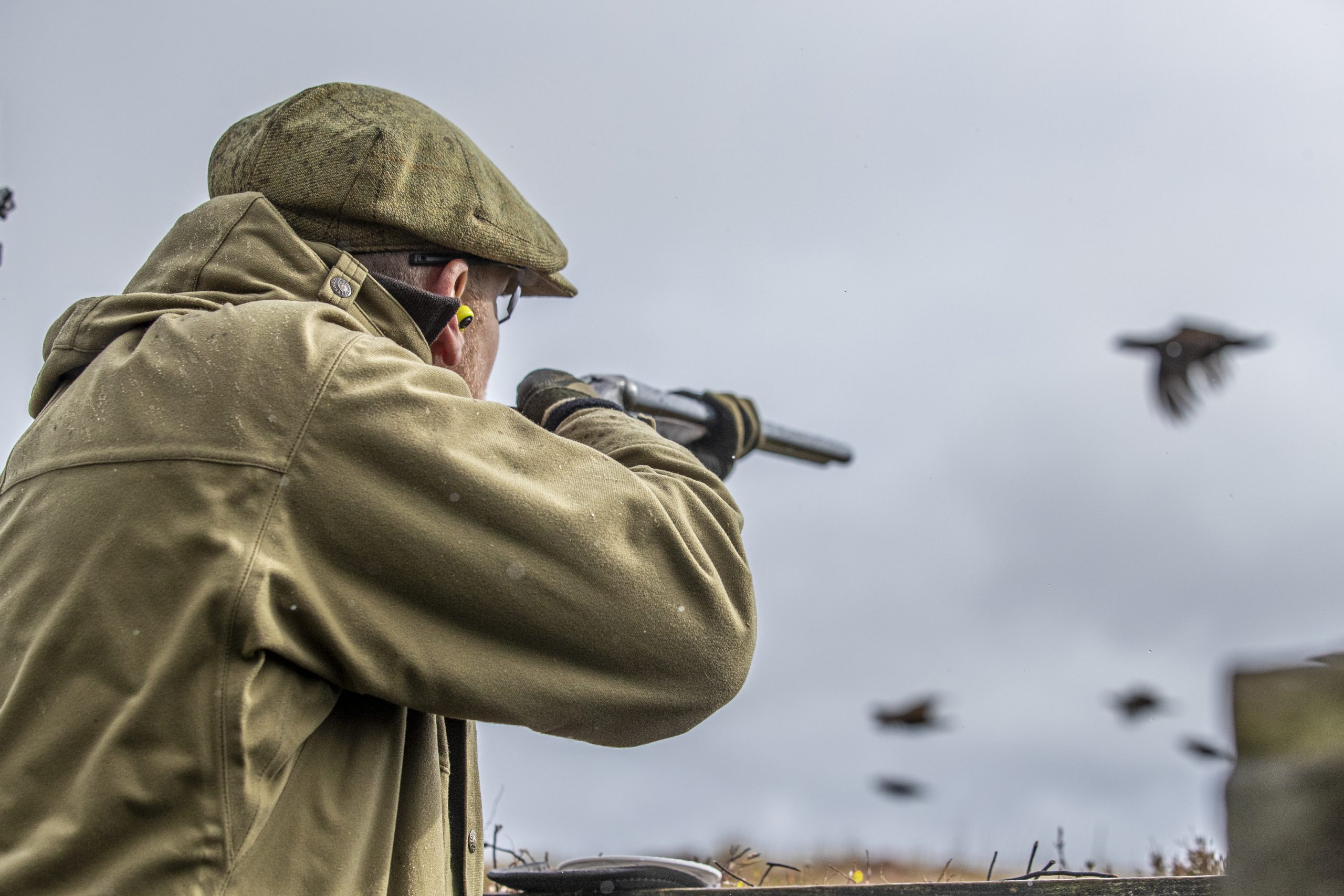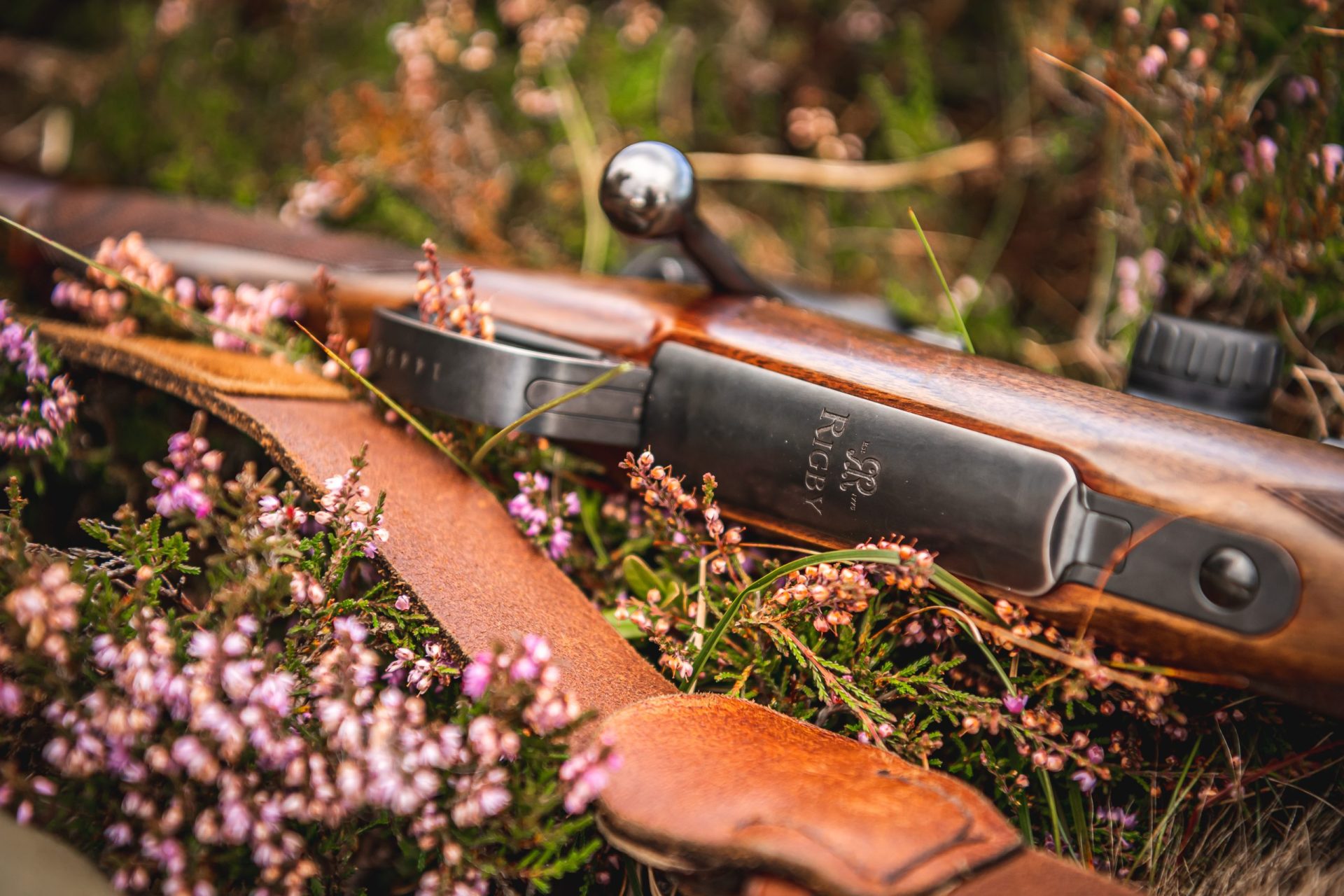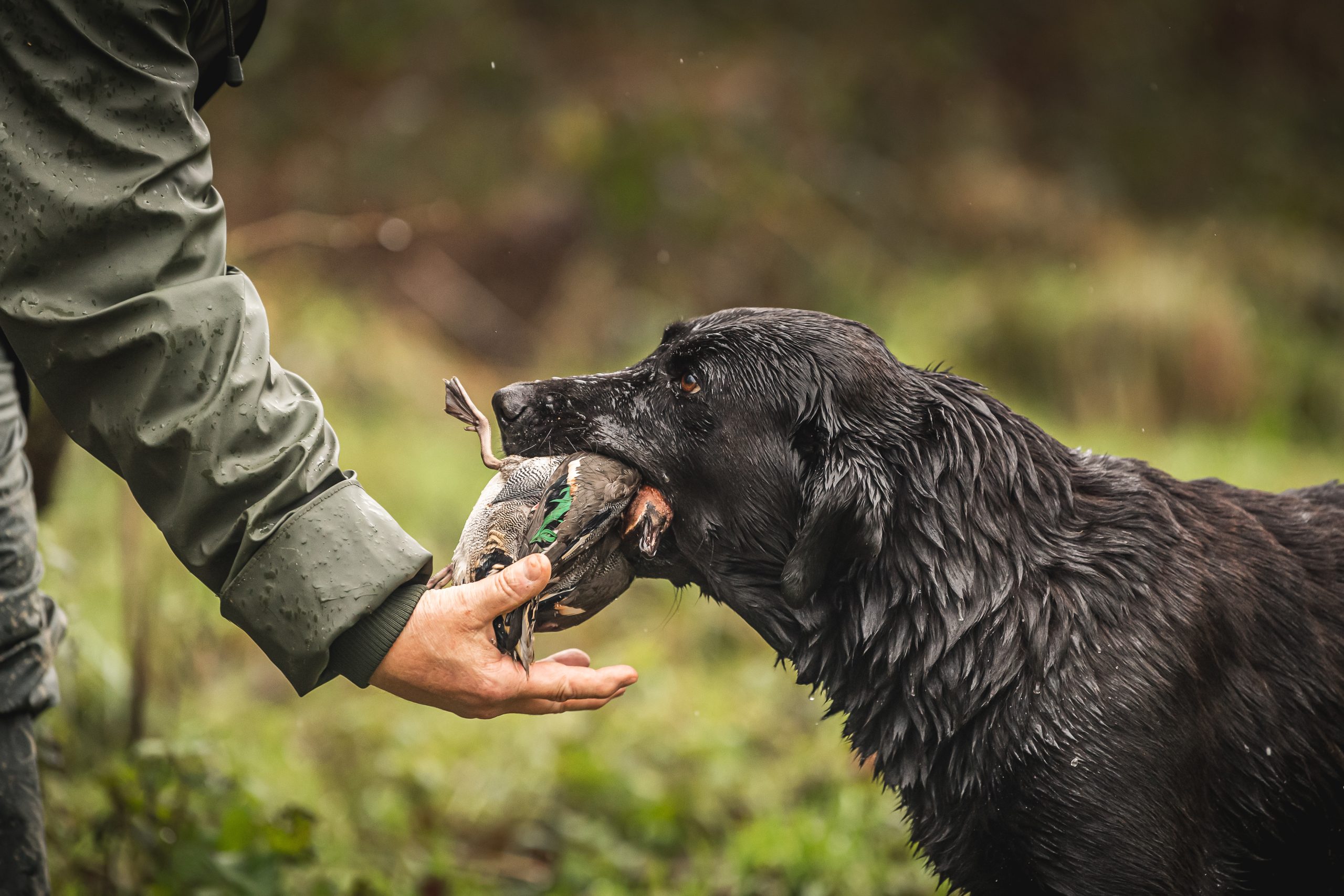Shooting
Driven shooting with the new Holland & Holland .410 Royal Deluxe
Would you like to speak to our readers? We offer sponsored articles and advertising to put you in front of our audience. Find out more.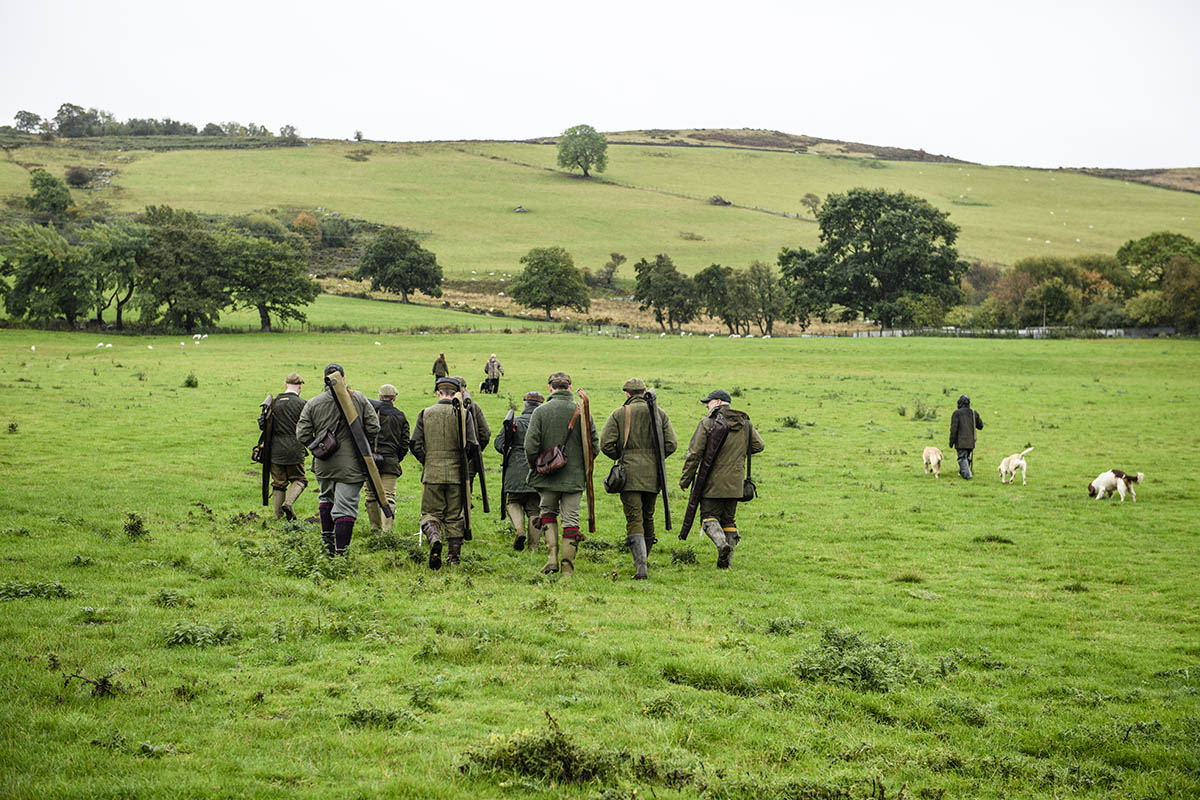
I often find that shooting in light drizzle can be quite refreshing. So, not one to be put off by the inclement conditions forecast, my good friend Robert Fretwell and I organised a last-minute day on a new shoot for our team of nine Guns.
There is certainly something very special about visiting a new part of the country and shooting at an estate for the first time. For me and many of the others shooting, this would be our first day at the Corwen shoot in North Wales. Wales, alongside parts of Devon and Yorkshire, is famed for its topography. Having shot extensively in this part of the country, I can tell you it’s pretty much perfect for presenting high and fast driven birds.
It’s the start of October, and in my opinion, as a stout Yorkshireman, way too warm for a coat. However, the rain is bouncing off the patio paving as we tuck in to our breakfast at the Berwyn Arms, a hotel situated above the banks of the River Dee beneath the stunning Berwyn mountains.
Picking a top team
Shooting with new people is one of my biggest worries, especially on smaller days where every bird presented counts. I honestly think that game shooting, especially driven shooting, can bring out the worst in people. Time and time again, I go on shoots and still witness greed, bag counting, shot-ratio fanatics and the glory hunters striving to shoot the highest bird of the day. Luckily, today’s team has been handpicked by Robert and me and includes farmers, sporting agents and a few from fancy gunmakers.
Sharing a day’s shooting with people who share your passion and ethos can also bring out the very best in people. With the ever-increasing price of shooting, choose your shooting buddies wisely.
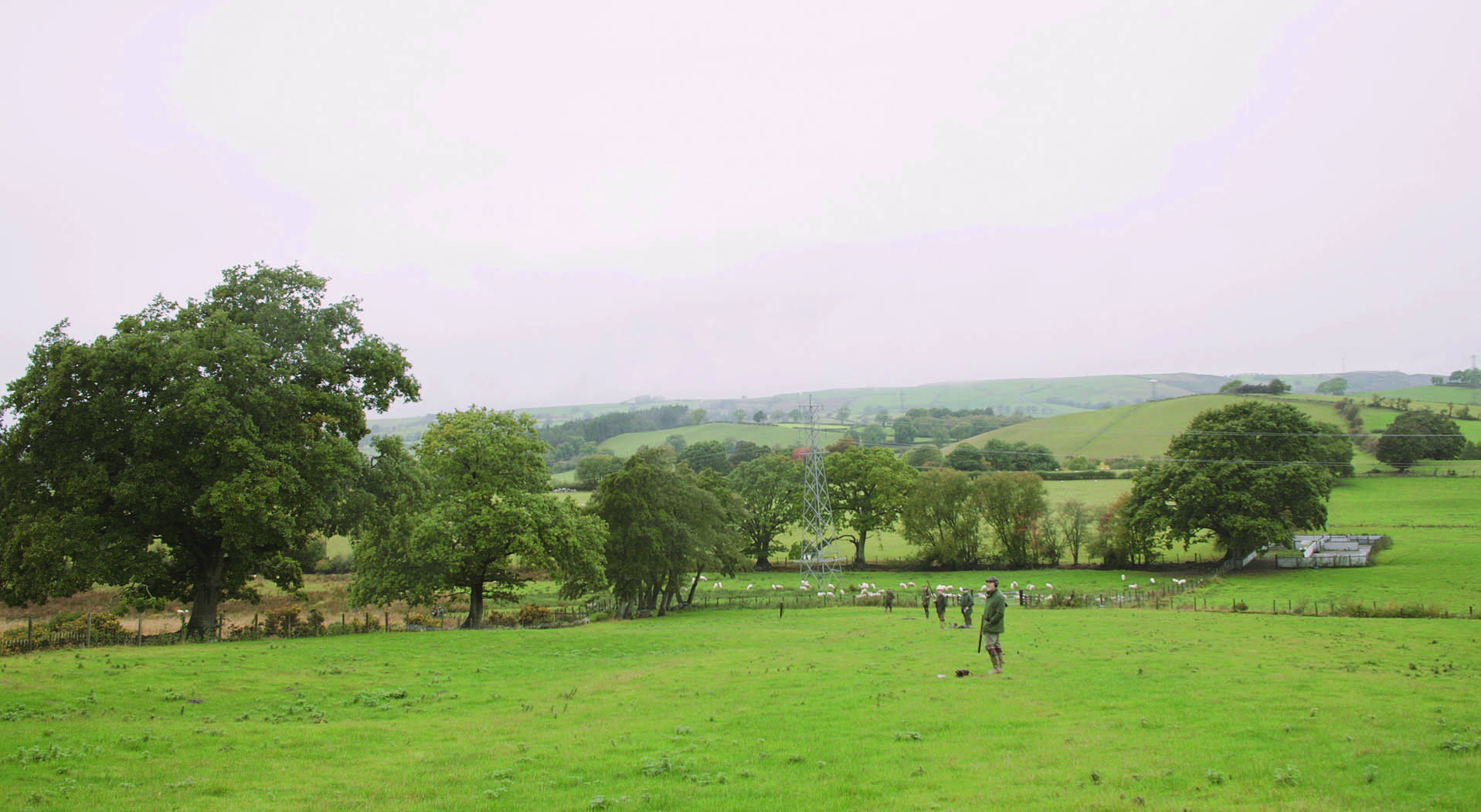
The second drive is at the base of an open hillside with the Guns positioned in the grass fields below
With breakfast devoured and the rain no longer bouncing off the paving stones outside, we race across the car park and I jump in with Luke Davison from Holland & Holland, a guest of mine for the day. Holland & Holland has been gracious enough to fulfil a long-held dream of mine: driven shooting with a Royal Deluxe over-and-under.
This dream has evolved over the years, especially during the past seven or eight seasons, where my obsession with smaller bores has really taken hold. For today’s small driven partridge shoot, I’m using a new Holland & Holland .410 Royal Deluxe over-and-under — to be honest, I may burst with excitement.
Challenging calibre
The use of small-bore shotguns for live quarry shooting is often debated. Why would you choose to use a smaller gun and cartridge size? Is it ethical and is it possible to kill cleanly? I can only answer this from a personal perspective, but I choose to use the .410 because I like a challenge. I practise all year round on clays, shoot hundreds of pigeons, test factory and homeloaded shells, and can attest to the efficiency of the gun when in the right hands. It’s not for everyone, and it definitely isn’t a beginner’s gun.
Today I am using Eley Hawk’s Extra Long fibre wad 18g No 5 cartridges. I’ve used these for years and they are the perfect choice when presented with the prospects of higher partridges as well as the possibility of pheasants.
Today’s shoot is the ideal bag size for me — 100 birds. Days such as these are reasonably priced and readily available. We have found that with smaller guns, with their viciously tight spread patterns, we get fewer injured birds left to pick-up. We expect to be presented with around four drives today, but given the weather this may change.
On the first drive, anticipation for the first shot starts building and the nerves kick in. I’m standing around 100 yards away from a huge woodland. If the partridges flush over the woods, they’ll be at the extent of what I would be comfortable shooting with a .410, around 35 yards. Luckily, the first few birds start to break from the base of the trees, followed by young pheasants. I’m on peg six, and the two Guns to my left, on pegs seven and eight, have their first shots and both shoot lovely birds. One bird looks to have taken a pellet, so I finish that off before taking a second shot at what is, to date, the best partridge I’ve ever shot with a .410. At the first drive’s whistle, we gather up our empties and pick our birds before hopping in the cars and moving on to drive two.
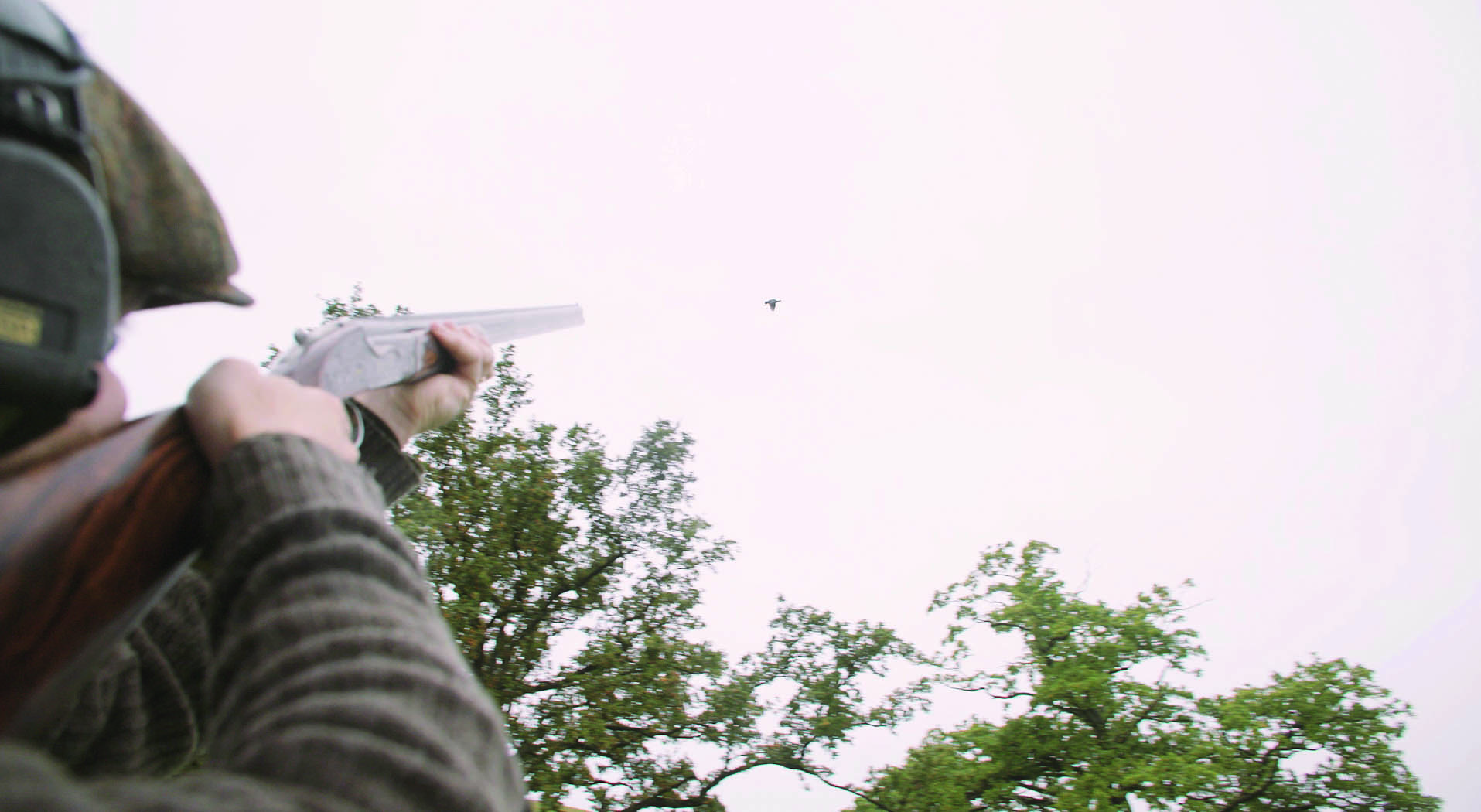
The Holland & Holland .410 Royal Deluxe over-and-under is wonderful to shoot
The second drive is shot at the base of an open hillside with Guns standing in the grass fields below. I enjoy shooting areas like this, as they usually hold all manner of wild bird species, from ducks and teal to snipe and woodcock. The first flush of partridges comes early from the higher gorse bushes and I’m lucky, being on peg nine at the end of the line, as two birds head straight for me, one after another. Two birds in the bag. The horn sounds and it’s still raining. The water, at this point, is slowly beginning to penetrate.
This is where the shooting changes. Moving up the valley, we drive up a number of steep dirt tracks, through forestry blocks and out on to the side of a mountain face covered in dense bracken. This is what Wales is fabled for: wet weather and extreme shooting landscapes.
Getting set up and ready in these conditions is the key to success. There will be signs where the birds may flush from — that highest peak on the bank ahead or a possible break in the trees. Once you have a focal point, you can set up your stance. Shooting on a slope can be tricky and potentially dangerous, so your footing needs to be perfect. The drive sees a steady trickle of super-fast partridges spiralling down over our heads. There is, in my opinion, nothing harder than a bird that appears driven but in reality is sliding from side to side while also dropping with the landscape.
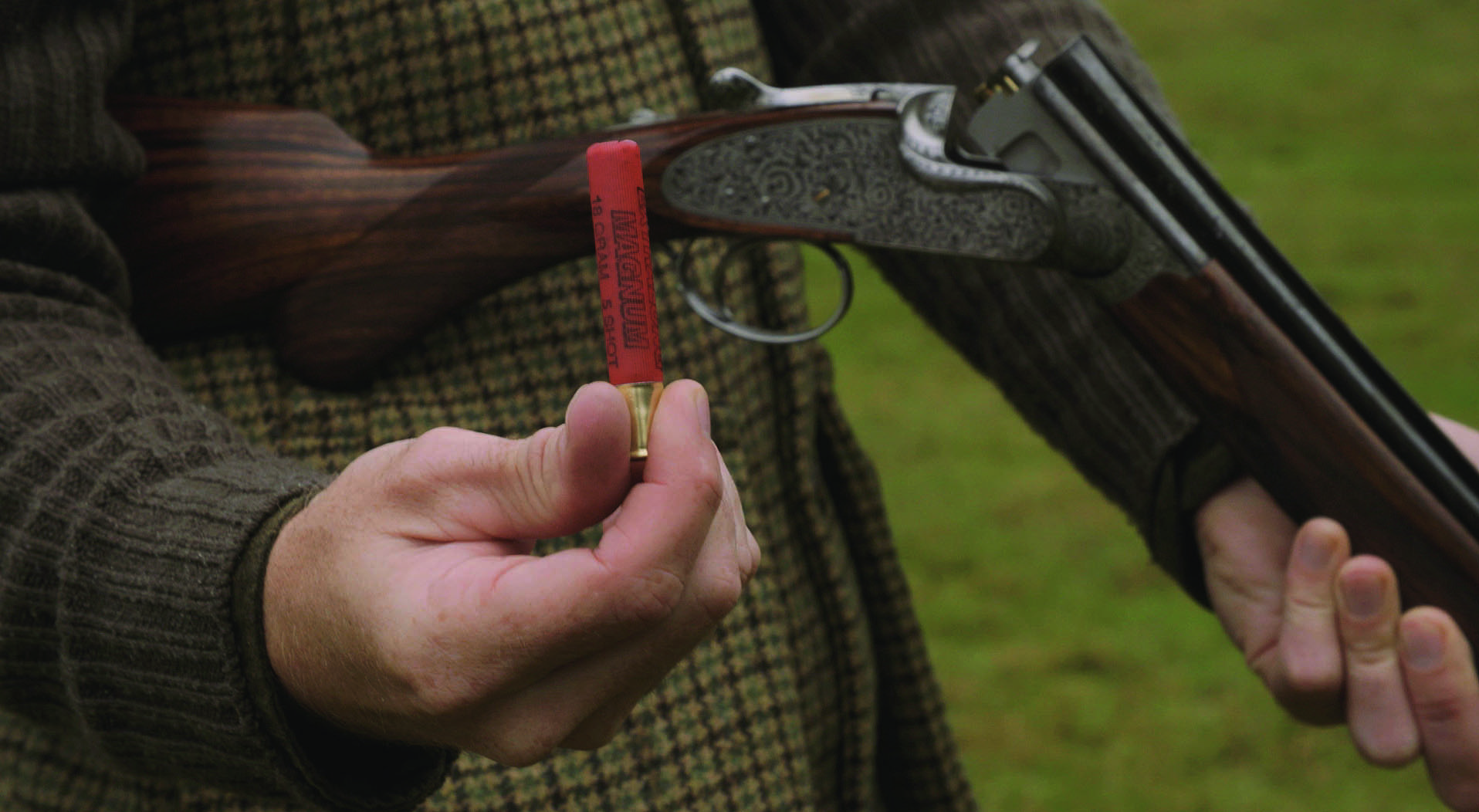
Jonathan McGee favours Eley’s Extra Long fibre wad 18g No 5 cartridges
Shooting a fast crosser
Three shots in and I finally connect with a high driven bird over my left shoulder; a quick reposition of the left foot turns it into a fast crosser. I’ll attribute this shot to my wonderful Holland & Holland over my own skills. I leave the stand with three birds down and 10 empty cartridges at my feet. Three partridge in the bag and more than enough shooting for drive three.
With spirits still high after a wonderful morning, we head back to the shoot’s lunch cabin for coffee and a sausage roll. This is the perfect moment for a quick photo/film shoot and there’s plenty of time to show the rest of the team the Holland & Holland guns that Luke and I have been using. Having visited the Holland & Holland factory, I’ve seen how the manufacturing process takes shape. It takes thousands of hours by some of the best craftsmen in the world to create each gun. The guns aren’t cheap, but they are worth every penny to sportsmen, enthusiasts and collectors alike.
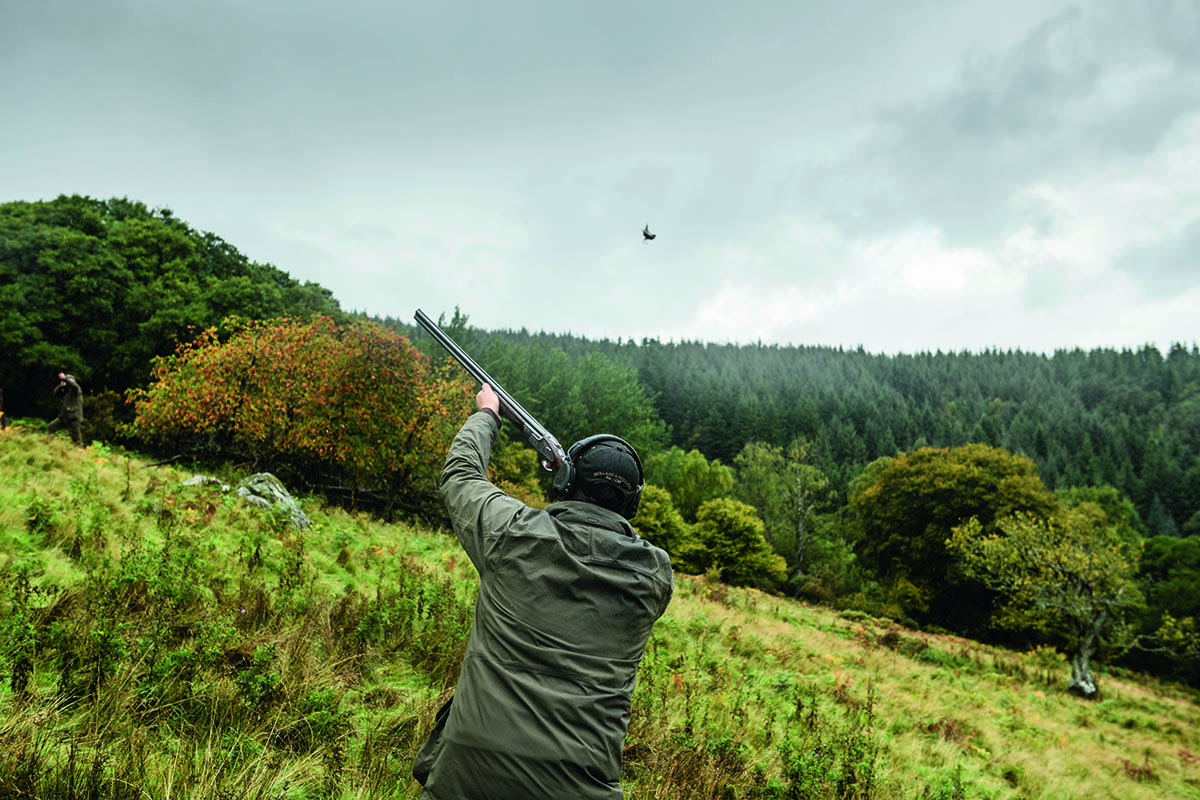
Shooting on a slope can be challenging, and the position of your feet is all-important
We jump back into our vehicles and head back to the mountainside for one last drive. The team pull out all the stops, flushing partridges and some of their older stock of beautiful long-tailed pheasants. On this occasion the pheasants make the drive. A first flurry of partridges passes over two Guns early on, but the pheasants keep coming. My trusted Eley Hawk 18g No 5s are more than enough for these birds, with two or three fast driven birds dropping way behind the line. We finish our day with more than 100 birds in the bag — 70 partridges to 30 pheasants — plenty for each of us to take home for dinner and hopefully a few to share among the beating team.
It’s time to shake off the wet tweeds, have a hot bath and then enjoy some hearty food with a few pints, while reminiscing over the birds we shot and the birds we missed, all of them remembered.
Related articles
Shooting
Shotgun
Let’s bite the bullet
The ban on lead shot for all game shooting is moving apace so it’s time to find the best eco-friendly ammunition that suits you and your rifle
By Time Well Spent
Shotgun
Shotgun buying guides
Starting out? Make sure it fits
If you’re buying your first clay gun, the right fit takes precedence – not good looks, the brand your mate’s got or even price – warns Paul Austin
By Time Well Spent
Manage Consent
To provide the best experiences, we use technologies like cookies to store and/or access device information. Consenting to these technologies will allow us to process data such as browsing behavior or unique IDs on this site. Not consenting or withdrawing consent, may adversely affect certain features and functions.
Functional Always active
The technical storage or access is strictly necessary for the legitimate purpose of enabling the use of a specific service explicitly requested by the subscriber or user, or for the sole purpose of carrying out the transmission of a communication over an electronic communications network.
Preferences
The technical storage or access is necessary for the legitimate purpose of storing preferences that are not requested by the subscriber or user.
Statistics
The technical storage or access that is used exclusively for statistical purposes.
The technical storage or access that is used exclusively for anonymous statistical purposes. Without a subpoena, voluntary compliance on the part of your Internet Service Provider, or additional records from a third party, information stored or retrieved for this purpose alone cannot usually be used to identify you.
Marketing
The technical storage or access is required to create user profiles to send advertising, or to track the user on a website or across several websites for similar marketing purposes.

